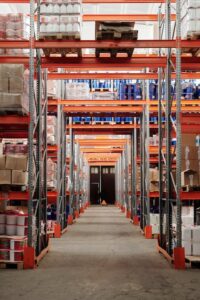Best Cost-Effective Ways to Save Without Using FBA
Third-party logistics (3PL) providers are an essential part of the supply chain for many businesses. They offer a range of services, including warehousing, inventory management, and order fulfillment. One of the primary reasons that e-commerce businesses and other companies outsource their logistics operations to 3PLs is to reduce logistics costs.
Amazon 3PL services can provide cost-effective logistics support, access to a vast network of distribution centers, and seamless integration with Amazon’s sales platform compared to managing your logistics in-house. However, it’s essential to understand the true cost of partnering with a 3PL provider like Amazon.
In this article, we’ll discuss how you can drive cost efficiency with Amazon 3PL. We’ll cover the following topics:
- Understanding the true cost of partnering with a 3PL provider
- Best practices for driving cost efficiency with Amazon 3PL
- How to measure the success of your cost optimization efforts
Looking for a 3PL Company for your Amazon Product or Ecommerce Business?
Table of Contents
Key Takeaways
- Amazon 3PL services can provide cost-effective logistics support, access to a vast network of distribution centers, and seamless integration with Amazon’s sales platform compared to managing your logistics in-house.
- To achieve financial success and accelerate business value realization in the cloud, you need to invest in Cloud Financial Management/Cost Optimization.
- Your organization needs to dedicate time and resources to build capability in this new domain of technology and usage management.
- Implementing cloud financial management can help you achieve financial success and accelerate business value realization in the cloud.
Understanding the True Cost of Partnering with a 3PL Provider
Inbound Shipping and Receiving Costs
Inbound shipping and receiving costs relate to shipping your inventory from your warehouse or manufacturing facility to your 3PL’s warehouses or fulfillment centers. The customer is responsible for bearing the cost of inbound shipping of goods.
Most 3PLs charge a fee – either a flat rate or an hourly rate for the labor required to unload your goods. The average inbound shipping and receiving costs for a 3PL (Third-Party Logistics) company are usually charged either by the hour or on a per-unit basis. The hourly rate can range from $20-$50 per hour on a per-unit basis, the charges can be $5 to $15 per pallet, or $.25 per item. Please note that these costs can vary based on factors such as the specific services provided, the volume of goods, and the 3PL company’s pricing structure. It’s always a good idea to get a detailed breakdown of costs from the 3PL provider for a comprehensive understanding.
Storage and Warehousing Costs
Storage and warehousing fees are typically based on the volume of space (cubic feet or meters) that your inventory occupies. However, when it comes to calculating storage and warehousing costs, there are some important nuances to consider:
Pricing models
Storage duration
Handling fees
Dimensions
Minimum monthly charges
Are your goods hazardous? (FBA and 3PL Companies charge more for hazardous goods)
Amazon’s Storage charges around $.87 per cubic foot on average, but the cost goes up significantly after the 2nd month. If you are looking to store your goods longer than 2 months, we recommend you find a 3PL company to help you reduce your storage costs.
*Please take into consideration that the cost be cubic feet is dependent on what kind of goods you will be storing at Amazon.

Best Practices for Driving Down Costs with Amazon 3PL
Optimize Your Inventory Management
One of the most significant ways to drive cost efficiency with Amazon 3PL is to optimize your inventory management. By optimizing your inventory management, you can reduce storage and warehousing costs, minimize the risk of stockouts, and improve order fulfillment times.
Inventory Management Best Practices:
Use data analytics to forecast demand and optimize inventory levels.
Implement a just-in-time (JIT) inventory management system.
Use a warehouse management system (WMS) to track inventory levels and automate order fulfillment processes.
Adjusting The Size And Weight Of Your Product.
Determining the correct size and weight of your product.
Try to downsize the packaging to save on fees.
Eliminate or reduce empty box space.
Allow the consumer to assemble parts of the product themselves.
Instead of separating the accessories, put them inside the product to save space.
Making Use Of Amazon’s Multi-Channel Fulfillment (MCF) Service
Benefits of using MCF:
Reduced shipping costs: MCF provides discounted shipping rates compared to other fulfillment options.
Faster delivery times: MCF leverages Amazon’s logistics infrastructure to provide faster delivery times.
Access to a vast network of distribution centers: MCF provides access to Amazon’s vast network of distribution centers, which can help reduce shipping costs and improve delivery times.
Minimize Your Shipping Costs
Shipping costs are one of the most significant expenses associated with logistics operations. To drive cost efficiency with Amazon 3PL, it’s essential to minimize your shipping costs.
Shipping Cost Minimization Strategies:
- Negotiate lower shipping rates with carriers.
- Use a transportation management system (TMS) to optimize shipping routes and reduce transportation costs. TMS providers like Oracle Transportation, Management (OTM), SAP Transportation Management, Uber Freight Transportation Management System, and of course us at Tactical Logistics.
- Use a packaging optimization tool to reduce packaging waste and lower shipping costs. We provide an in-house-only all-in-one package for all of these services.
Establish Clear Objectives
Define Your Goals
- Cost Reduction: Establish a clear benchmark for cost savings to work towards. Look at areas where costs can be reduced such as transportation, warehousing, inventory carrying, etc.
- Service Improvement: Set goals for enhancing delivery times, order accuracy, and customer satisfaction. faster delivery times and fewer errors can improve customer loyalty.
- Operational Efficiency: Streamline processes to improve productivity. Look at bottlenecks and areas of waste that can be optimized.
Benchmark Current Performance
- Document current logistics costs and operational metrics to provide a baseline for comparison. This includes transportation costs, warehouse costs, inventory costs, order cycle times, on-time delivery rate, accuracy, etc.
Key Performance Indicators (KPIs)
Financial Metrics
- Cost Per Order: Evaluate the total cost incurred for processing each order. Lowering this can directly reduce logistics costs.
- Freight Cost Savings: Measure the reduction in freight costs over time. Benchmark against previous periods.
- Inventory Holding Costs: Assess the costs associated with holding inventory, including warehouse space, insurance, spoilage etc. Reducing excess inventory can lower costs.
Operational Metrics
- Order Accuracy: Track the accuracy of order fulfillment. How often are the correct items and quantities shipped
- Order Cycle Time: Measure the time taken from order placement to delivery. Faster cycle time improves customer satisfaction.
- Return Rate: Evaluate the rate at which products are returned due to damage, defects, or other issues. A lower rate saves on reverse logistics costs.
Customer-Centric Metrics
- Customer Satisfaction: Gauge customer satisfaction through reviews, ratings, or surveys. This provides insight into their perception of your logistics operations.
- On-Time Delivery: Measure the percentage of deliveries that arrive at the committed time. Higher rates improve reliability.

Utilize Technology for Tracking and Analysis
Using Customer Relationship Management (CRM) enhances customer experience and satisfaction. Adopting a customer-centric model across your business will provide customer retention and loyalty.
By providing CRM training and support to employees. Maintaining clean and up-to-date data will help strategize optimize and drive sales goals.
Employ Advanced Analytics
- Utilize analytical tools to track KPIs, measure performance, and analyze the data over time to identify opportunities for improvement.
Real-Time Monitoring
- Employ real-time tracking systems to monitor logistics operations and identify areas for improvement. React to issues quickly.
Regularly Review and Adjust Strategies
Continuous Improvement
- Regularly review performance data to identify areas that need improvement. Adjust strategies based on the data to continually optimize costs and service levels.
Collaborate with Your 3PL Provider
- Work closely with your 3PL provider to identify cost-saving opportunities and improve service levels. Leverage their expertise. They’re here to work with you, for you.
Conclusion
In this article, we discussed how you can drive cost efficiency with Amazon 3PL. We covered the true cost of partnering with a 3PL provider, best practices for driving cost efficiency with Amazon 3PL, and how to measure the success of your cost optimization efforts.
By following these best practices, you can reduce logistics costs, improve order fulfillment times, and accelerate business value realization in the cloud..
FAQs
Amazon 3PL services provide logistics support including warehousing, inventory management, and order fulfillment, by leveraging Amazon’s vast network of distribution centers and its sales platform, aiming to reduce logistics costs for e-commerce businesses and other companies.
Partnering with a 3PL provider like Amazon can lead to cost-effective logistics operations, access to a vast network of distribution centers, and seamless integration with Amazon’s sales platform, which can be beneficial compared to managing logistics in-house.
Costs may include inbound shipping and receiving costs, storage, and warehousing fees, handling costs, shipping costs, and aftercare costs. Understanding these costs is crucial to evaluating the true cost of partnering with a 3PL provider.
Optimizing inventory management can be achieved through data analytics to forecast demand, implementing a just-in-time (JIT) inventory management system, and utilizing a warehouse management system (WMS) to track inventory levels and automate order fulfillment processes.
Amazon’s MCF service helps in fulfilling orders from multiple sales channels using Amazon’s logistics infrastructure, providing access to a vast network of distribution centers. This can lead to reduced shipping costs, faster delivery times, and overall improved cost efficiency in logistics operations.
Shipping costs can be minimized by negotiating lower shipping rates with carriers, using a transportation management system (TMS) to optimize shipping routes and reduce transportation costs, and employing a packaging optimization tool to reduce packaging waste and lower shipping costs.
- The key takeaways are:
- Investing in Cloud Financial Management/Cost Optimization is crucial for financial success.
- Dedicating time and resources to build capability in this new domain of technology and usage management is important.
- Implementing cloud financial management can accelerate business value realization in
- the cloud.







